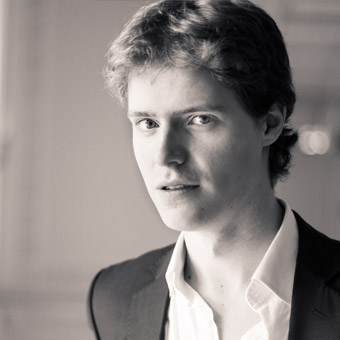Chopin and Prokofiev fare best in pianist Noack’s return to Miami
Sizzling Prokofiev and an individual approach to Chopin highlighted Florian Noack’s return to the Miami International Piano Festival Sunday afternoon at the Aventura Arts and Culture Center. When Noack debuted at the festival in 2017, he presented a program of his own transcriptions of orchestral repertoire. On this occasion he turned, with one exception, to more mainstream keyboard scores.
Exhibiting a light touch, the young Belgian pianist drew song-like phrasing from the resonant Steinway in the first movement of Schubert’s Sonata in A Major. With skillful utilization of the pedal, dynamics were nicely varied and calibrated. The Andante emerged almost as a nocturne. Noack assayed the final movement at a fast pace. Yet, for all the finely chiseled shaping of lyric lines and dance rhythms, this was temperamentally cool Schubert. The romantic passions around the music’s edges were kept at a safe distance.
Noack’s transcription of Prokofiev’s Classical Symphony would have made a more effective opening hors d’oeuvre. Taking the opening Allegro at lightning speed, Noack managed to encompass much of Prokofiev’s orchestral text and he captured the quirky thematic twists with considerable ingenuity. The sarcasm of Prokofiev’s gavotte sendup was skillfully articulated. Noack turned the Molto vivace finale into a showpiece of rapid figurations, effectively re-calibrating this tribute to Haydn into a keyboard-centric score.
The concert’s second half brought the afternoon’s most compelling performances. Chopin’s Impromptu No. 3 in G-flat Major was rendered with salon-like airiness in an almost improvisatory manner. Eschewing the prettified softness many pianists bring to Chopin, Noack’s performance of the Ballade No. 4 was deliberate and expansive. He emphasized the drama beneath the melodic writing, the final tumult a cascade of notes storming across the keys.
In place of the originally scheduled Sarcasms and 4 Etudes by Prokofiev, Noack concluded with the Sonata No. 6 in A Major, the first and least-often-played of Prokofiev’s three “War Sonatas.” (The 1940 score was also the only one of the wartime sonatas the composer played himself.)
Following Noack’s revisionist view of Chopin, the pounding, jagged phrases of the Allegro moderato carried the musical drama to a new level. The contrasting secondary theme emerged as a reverie of peaceful times past. Noack took the fierce hand crossings and knuckle-busting spans in stride, playing with blazing volume and accuracy. He brought out the faux elegance of the pensive melody in the Allegretto and traced the finely colored paths of the Tempo di valzer lentissimo.
In Noack’s hands, this third movement was definitely not a balletic waltz. The sweeping sonorities of the climax presaged the demonic patterns of the final Vivace in which Noack radiated both the terror and excitement beneath the notes. He astutely gauged the calm of the central episode, making a seamless transition into the repetition of the sonata’s opening motif in fiery fashion.
Bravos and curtain calls brought Noack back for the “Tale of the Kalandar Prince” from his transcription of Rimsky-Korsakov’s Sheherazade. His elegant realization of the famous violin solo confirmed his talent for transforming music conceived for other instruments to the keyboard.
Posted in Performances
Leave a Comment
Mon May 6, 2019
at 12:25 pm
No Comments
